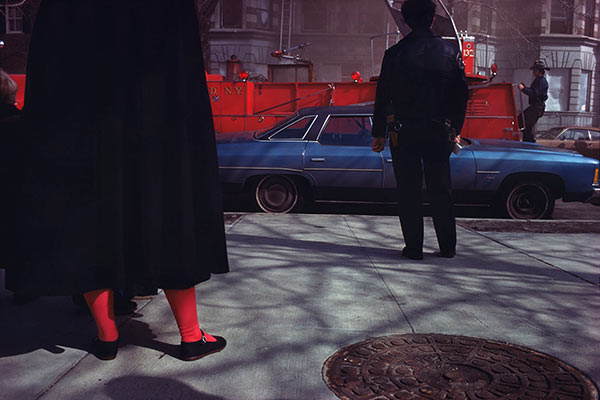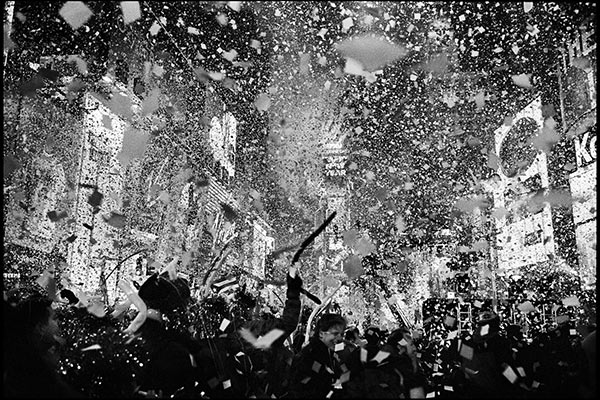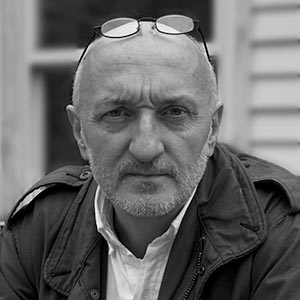Frank Fournier
Frank Fournier born in Saint-Sever, France has been a photojournalist and a New Yorker since October 1976. A deeply humanistic photographer, concerned by social and political issues, he has produced extraordinary work on the civil war in Lebanon, the aftermath of the eruption of the Nevado del Ruiz, infants with AIDS in Romania, women rights in Sarajevo during the Bosnian civil war, the genocide in Rwanda, the destruction of the World Trade Center
Frank Fournier was born in 1948 in Saint-Sever, France. After four years of medical studies, he set medicine aside and began his photographic career in New York City in 1976, joining Contact Press Images a year later for becoming a member photographer in 1982.
In a diverse career covering the Lebanon civil war, to foreign trips with Pope JPII, numerous G8 summits, to the Wall Street crash of 1987 and to everything in between, Fournier was most at home covering the stories on the underprivileged or those essays centred on human values stressing an individual’s dignity. Not surprisingly, Frank was a leader in Contact’s global coverage of the evolving AIDS crisis in the US in the early 80s, especially how it impacted children and minorities.


The National Academy of Television Arts & Sciences awarded Fournier an “Outstanding Achievement in Public Service Announcements” in 1989 for a campaign he photographed with AIDS-affected children for San Francisco-based KPIX TV.
In 1986 he received the World Press Photo Premier Award – its news photograph of the year – for his coverage and portrait of Omayra Sanchez, a 13-year-old victim of the Nevada del Ruiz volcano’s eruption in Columbia who was irretrievably trapped for days, ultimately dying from exposure; Fournier never left her side and documented efforts to rescue her until the moment she passed. A deeply humanistic photographer, he learned of the epidemic of infants infected with AIDS and abandoned in Romanian orphanages in 1990.
Fournier’s photographs won the first place in World Press Photo as well as in the National Press Photographers’ Pictures of the Year competition. Later he documented the systematic use of rape as a tool of war, photographing and interviewing rape victims in Sarajevo during the Bosnian civil war. When word came of an unfolding genocide in Rwanda, Frank spent weeks in the country covering that horrifying story and garnering a cover of TIME in the process. When the World Trade Center was felled on September 11, 2001, Frank was there.
He remains one of the early members of Contact Press Images and because of his longevity, background as humanist and his reputation as a strong street photographer, and Master photo printer he is a regular instructor at the International Center of Photography in New York City and a mentor for students of the South Bronx.
BOOKS & AWARDS:
- Red-Eye Published in January 2020
- Eleven: Witnessing The World Trade Center 1974-2002 Rizzoli Books
- Sarajevo: Portrait of the Siege with Mathew Nathans by Warner Communications
- Talking Pictures A collaboration with Isabelle Allende Chronicle Books
- World Press Photo 1st Place, News Features Category, Single Image, Romanian Infant Victim of AIDS. 1991
- The University of Missouri Award for Photo Work on AIDS done in Romania. 1991
- Maine Photographic Workshop Grant for Children and Families with AIDS. 1990
- National Academy of Television Arts and Sciences for Outstanding Achievement in Public Service Announcements for AIDS Awareness Program. 1989
- Fuji France Best Advertising Photograph of the Year. 1987
- World Press Photo 1st Place, News Feature Story. Wall Street Stock Market Crash. 1987
- World Press Photo Photo of the Year. Omayra Sanchez, Victim of the Nevado del Ruiz Volcano Eruption in Colombia. 1986
